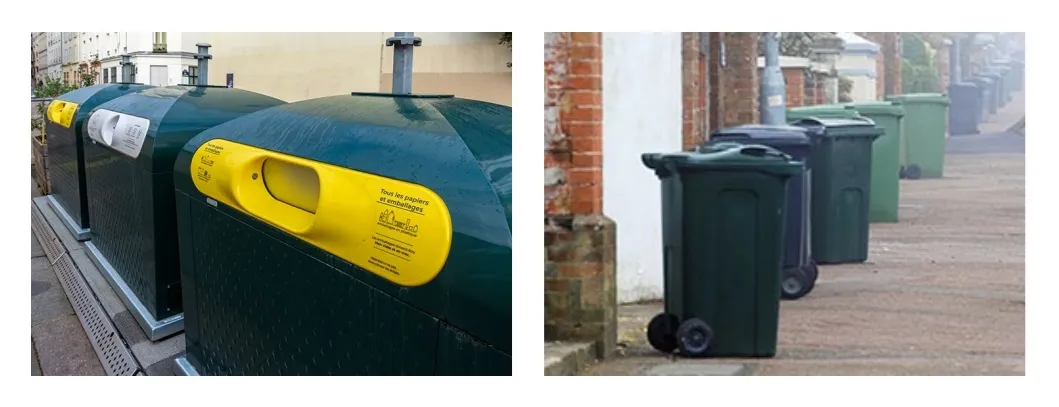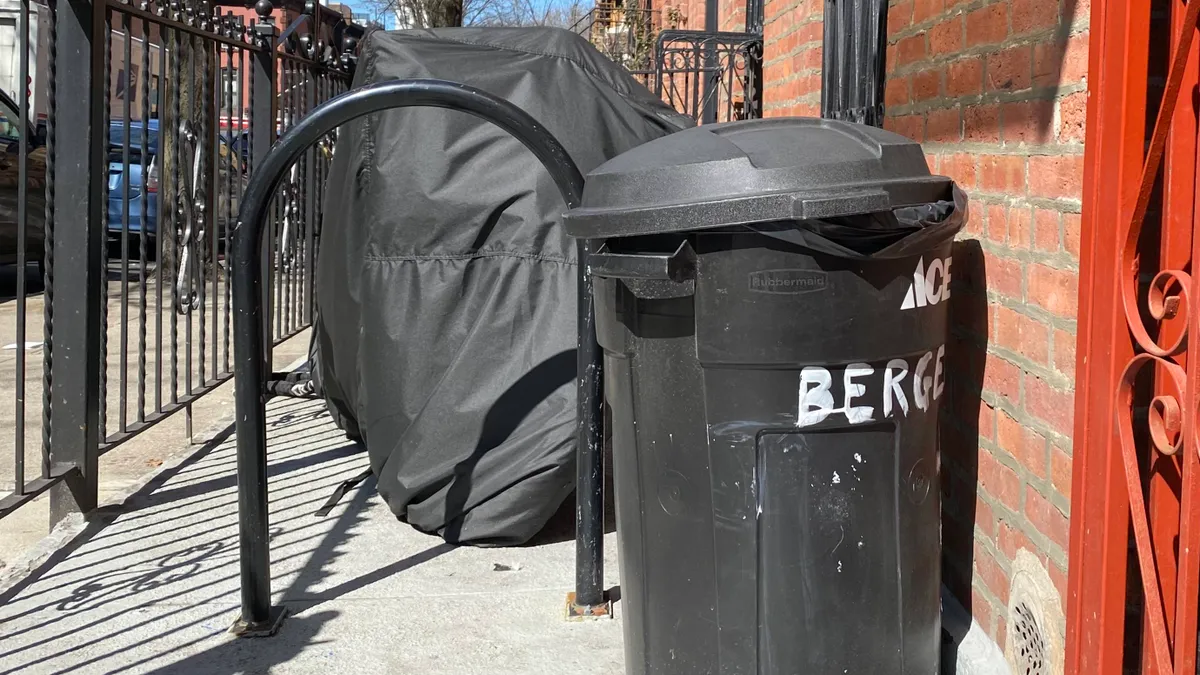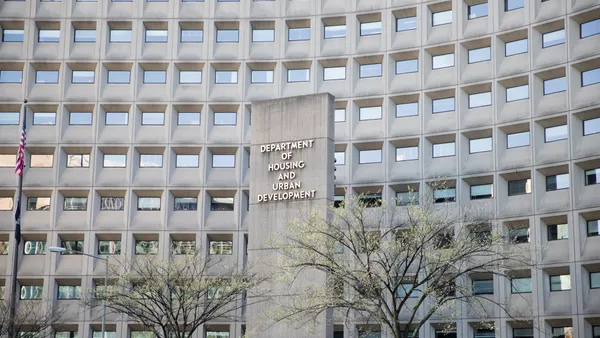Dive Brief:
- New York’s Department of Sanitation announced it has come to terms with Spain-based manufacturer Contenur on a contract for up to $7 million in large, stationary on-street waste bins. The 10-year contract would secure up to 1,500 bins for large residential buildings in a portion of Manhattan, part of a pilot in DSNY’s citywide containerization strategy.
- The city agency also heard comments on Thursday about a proposed rule for residential buildings with one to nine units. Beginning on June 1, 2026, the rule would require such buildings to place their trash in wheeled waste bins from Otto, procured via a separate contract announced in March.
- Several groups denounced the rule, arguing it would take up sidewalk space with bulky containers since many buildings lack the space to store bins inside. Many cited the Center for Zero Waste Design's recommendations, which believe large containers like the ones from Contenur that sit in parking spaces would be a better solution.
Dive Insight:
The debate is the latest dust-up in DSNY's "war on rats." Mayor Eric Adams' administration has made containerization a cornerstone of his strategy, attempting to shift a decades-old status quo in the city where trash and recycling are placed loose on the sidewalk for collection.
Earlier this year, DSNY announced a contract with Otto for millions of wheeled bins that will be distributed into 2026. When Adams rolled out an example of the new official “NYC Bin” in June, he also announced the proposed rule requiring small residential buildings to containerize using the bins.
Currently, owners of small residential buildings can use their own bins as long as they are not too large. Those who already own such bins with lids that latch would have until June 1, 2026, to buy the DSNY bins under the proposed rule. Those who just set out bags without a bin would need to purchase the bins by Nov. 12, when the proposed rule would go into effect.
DSNY Press Secretary Vincent Gragnani defended the proposal in an emailed response.
“The model we are pursuing — wheelie bins for businesses and low-density residential buildings, and on-street containers for high-density residential buildings — was developed after substantial volumetric research and analysis, and a review of global best practice. It is the model that will actually work in New York City, finally defeating the black bags once and for all and taking back our public space,” Gragnani wrote.
Containerization is just one of a series of major changes the Adams administration has made to sanitation in New York City. It has also moved forward with a commercial waste zone system, set to begin piloting this fall, and is in the process of rolling out curbside organics collection.
The large bins procured from Contenur would be used in Manhattan Community Board 9, a district that includes West Harlem. There, DSNY is planning a pilot next year where large residential buildings will use the large, on-street containers.

The administration’s decisions have been guided by the Future of Trash report released last year. In it, DSNY recommended a block-by-block approach that prioritizes individual bins in areas with low density, like Staten Island, eastern Queens and southern Brooklyn. But in other areas, the report suggests using large, on-street shared containers that would sit in spaces currently used for parking.
Overall, the report estimated about 50% of residential street segments surveyed could use individual bins “without eliminating any curb space uses.” Another 39% could use large shared containers. Since the report’s release, the city has tweaked its approach — for instance, buildings with 10 to 30 units could still opt to use wheeled bins instead of the large containers in the West Harlem pilot. Notably, DSNY said large containers will be assigned to individual buildings, not shared between them.
The Center for Zero Waste Design, a New York-based policy incubator, has argued that DSNY’s current rule is unnecessarily balanced in favor of the wheeled-bin approach. In comments, the center said wheeled bins made sense for detached one-to-two unit buildings but not for buildings that might have retail storefronts on the ground floor. Having a line of trash cans in front of storefronts would be bad for business, the center argued.
During a virtual meeting hosted by the city on Thursday to discuss the proposed rule, attendees including Miflin said DSNY had shut them out of any dialogue before drafting and releasing the rule proposal. Anna Sacks, legislative chair for the Manhattan Solid Waste Advisory Board, said New York is in danger of becoming “bin city” and pushed for a six-month delay in implementing the rule.
Other groups, like the Small Property Owners of New York and Open Plans, also spoke in opposition to the rule as proposed, arguing it could add to the space taken up on the sidewalk by garbage and requesting changes. In written comments, the office of Brooklyn Borough President Antonio Reynoso also said the proposal is "too broad, was rolled out too quickly, and has the potential for unintended consequences.”
Gragnani pushed back on criticism in his response Monday. He argued that DSNY’s current approach would break the inertia preventing large-scale containerization in New York City. Having buildings use their own, designated on-street stationary bins, he wrote, would prevent businesses from illegally putting their trash in bins meant for residential use, prevent complaints about where the bins are located and make it clear who was responsible for cleaning around the bins.
Gragnani said “all feedback was received and will be reviewed before a final rule is published.”













